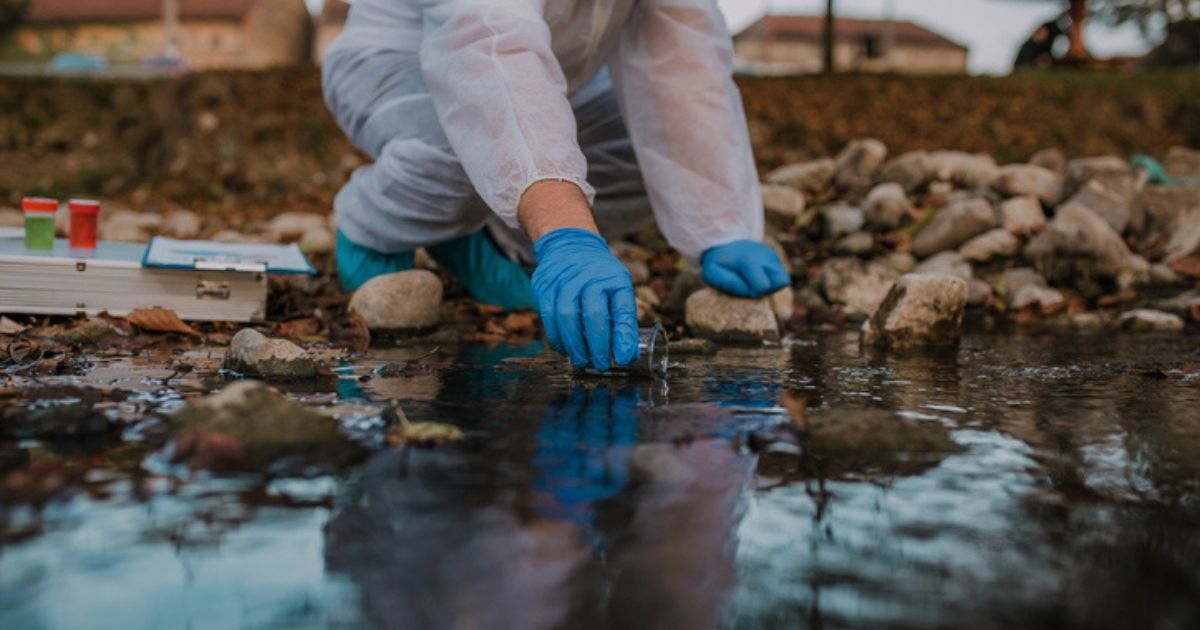
Answering Your Top Questions About Environmental Medicine
Photo from Getty Images
Originally Posted On: https://www.alternativetomeds.com/blog/environmental-medicine-questions/
As holistic medicine and treatments continue to gain popularity, many individuals have started asking questions. Namely, environmental medicine is a specific area of holistic medicine that isn’t widely understood. You might even be wondering why environmental medicine is worth your time in the first place.
What are its primary benefits, and what can patients expect from their treatment?
The truth is, like many other facets of holistic medicine, environmental medicine is so much more than just a fad. Instead, it is an ever-evolving branch of treatment, suited to a wide variety of patients and diagnoses.
What Is Environmental Medicine?
The field of environmental medicine is closely tied to the principles of environmental science.
A wide variety of diseases can be treated using environmental medicine-based treatments, including (but not limited to) lung disease, cancer, contact dermatitis, as well as many other diseases, both acute and chronic.
Patient/Environmental Nexus
If a physician practices environmental medicine, they opt to home in on the nexus between their patient (or the group of people) and the natural environment that they come into contact with.
Attuned to Water, Air, Soil, Food
Using environmental science, practitioners of environmental medicine are attuned to the four primary environmental media—water, air, soil, and food. The practitioner in question will examine how each of these elements influences or contributes to their patients’ ailments. This assessment will serve as the basis for treatment.
Links to Preventive/Occupational Medicine
As you might expect, the field of environmental medicine shares much of its philosophy with preventive medicine, as well as community and occupational medicine.
Like most other fields of medicine, however, environmental medicine has continued to evolve over the years, even seeing a significant shift in its focus. For instance, in the past, environmental medicine tended to emphasize the study and control of infectious diseases based on the natural elements that were mentioned previously.
Focus on Chemical/Physical Hazards
Nevertheless, in the modernday, this subset of holistic medicine generally focuses on the numerous physical and chemical hazards found in the environment. Based on the philosophy of environmental medicine, these hazards can play an overwhelming role in the creation and spread of diseases, from cancers to lung diseases and beyond.
Given its broad premise, environmental medicine can be utilized throughout various other medical specialties, including primary care. Clinicians can employ the standard practices and principles of environmental medicine to help isolate the source of the patient’s health concerns. Then, using this analysis, the clinician can take the necessary steps to help that patient (and their community at large) prevent adverse health effects based upon the common hazards in their environment.
Although the broader medical community is aware of the environment and how it can impact the health of their patients, these effects aren’t always fully understood.[1] In particular, this is the case for environmental factors that aren’t a result of the individual’s lifestyle. For instance, if the patient is a chronic smoker, then the environmental situation they place themselves in will increase their risk of developing cancer, lung diseases, and more. This sort of scenario would not be something that environmental medicine practitioners would focus on.
Instead, those involved in environmental medicine are more interested in examining the variables out of the individual’s control that are an unavoidable component of their day-to-day environment. For example, these variables could be found in the patient’s home, workplace, or community.
What Does an Environmental Physician Do?
 Photo from Getty Images
Photo from Getty Images
The concentration of an environmental physician doesn’t typically lie in lifestyle choices that an individual makes or explicitly harmful environmental situations that they place themselves in.
A possible misconception about environmental physicians is that because they take so much of their medical philosophy from holistic practices that they don’t undergo the same extent of training that other doctors experience. However, this is far from the case—many environmental physicians will receive a rigorous education before practicing medicine.
For an environmental physician to successfully treat patients and succeed in their field, they must first develop a deep understanding of medicine, chemistry, environmental science, and other related fields. They must also have strong familiarity with environmental pathology.
Further, environmental physicians can possess a wide variety of potential specialties, including pediatrics, immunology, chronic pain, or pain reduction,[1] and more.
To begin assessing their patients, an environmental physician must first focus on the aforementioned environmental media: food, water, air, and soil. Notably, practitioners must examine the kinds of hazards that are present within any of those elements. For instance, they might consider the kinds of chemicals present in the water supply that an individual drinks from. This variable must be carefully profiled, as this chemical (especially in conjunction with other environmental hazards) could be playing a significant role in an individual’s disease. For the disease to be successfully prevented or eliminated, the impact of this hazardous chemical must be taken into account.
More specifically, the hazards that an environmental physician might look at come in various forms and from a variety of sources. Chemical agents often play a heavy role in environmental medicine and breaking down the environmental impact on an individual’s disease. Common chemicals include heavy metals and pesticides, which can be present in anything from food to water and beyond. This means that if a patient is interacting with these essential elements, by proxy, they are being exposed to the chemical hazard—whether they are aware of this or not.
Other potential environmental hazards include physical agents (such as ionizing radiation), biologic agents (including viruses and bacteria), psychosocial effects, and trauma (whether it is acute or repetitive).
An environmental physician must also acknowledge how their patient is consuming the hazard in question. For example, they may determine whether the patient is ingesting this hazard regularly. If not, they could be inhaling it. Alternatively, practitioners should determine whether the dermal route of exposure appears to play a role. These determinants can impact the treatment an individual receives—as an example, if they are currently ingesting the hazard via their diet, dietary changes can reduce their exposure. In many instances, this is an adjustment that can be made under the supervision of a trained environmental physician.
Other variables that an environmental physician will typically consider are the magnitude, duration, and frequency of exposure to the hazardous material.
Why Is Environmental Medicine Important?
 Photo from Getty Images
Photo from Getty Images
First, the core reason that environmental medicine is so critical is simple: Everyone is exposed to the environment and its elements throughout their day-to-day life, meaning that it can be difficult to avoid or reduce their exposure to hazardous materials.
Hazardous environmental factors are also becoming increasingly common and even more challenging to stay away from—especially without the aid of a knowledgeable environmental physician.
It is possible for a patient to come into contact with health hazards at several points in their daily life—for instance, unavoidable variables such as outdoor air quality, surface and groundwater, dangerous gases, the climate, indoor air pollution, inadequate sanitation, or heating, and more.
Additionally, it’s important to note that the exposure someone receives to hazards in their environment can help determine the length and quality of that individual’s life.[1] If a person is already dealing with poor health, then the addition of poor environmental quality can substantially impact their overall health and well-being.
Through placing stress on environmental medicine, physicians can begin to reduce the suffering of those whose health statuses are currently at risk, mitigating the symptoms and complications they face.
What Is the Difference Between Environmental Health and Environmental Medicine?
 Photo from Getty Images
Photo from Getty Images
Although the terms are simple to conflate, environmental health and environmental medicine possess several distinct differences.[1] This is true on a theoretical level, although it is also the case in practice.
Environmental health focuses on examining the gradual degradation of the environment and then determining how these issues negatively affect the public’s health. Several scientific approaches are necessary for environmental health, including toxicological, exposological, epidemiological, and biological.
On another hand, the goal of environmental medicine is to examine and prevent the negative effects the environment has on an individual’s health. The environmental medicine philosophy can be employed at many stages of the diagnostic and treatment process. In particular, environmental medicine tends to focus on:
- Diagnosis
- Prognostic evaluation
- Treatment
- Precautionary measures to take (to prevent further damage)
To treat a disease using environmental medicine, the actual cause of the disease is what physicians focus on. Matters of environmental health might still emphasize treating the symptomatic effects of a disease. Treatment plans will often be based around whatever biochemical effects the physician observes, rather than preventing those effects, in the first place.
Environmental medicine strives to help patients avoid hazards in their environment that could be damaging their health, as well as other vital preventive measures—this includes the promotion of a healthier lifestyle overall. So, not only are environmental medicine treatments based around the effects that a physician observes in their patient, but it puts more weight on the physio-pathological causal mechanisms that lead to these symptoms and diseases.
What Are the Three Examples of Environmental Health?
The field of environmental health is broad, and as a consequence, the examples are practically endless.
At their core, each example centers around improving the health of our environment to improve the overall health of the public.
Three of the most critical factors that affect environmental health are:
- Natural disasters and the impact of climate change
- Air pollution, both indoors and outside
- Poor water quality
What Are Examples of Environmental Diseases?
Environmental diseases can be difficult to define, given the overwhelming impact our environment can have on individual health. If someone is exposed to hazardous substances or toxins in their environment, and they become sick as a result, then the individual has developed an environmental disease.
Some environmental diseases are more commonly recognized than others, however. Here are some examples of widely recognized environmental diseases:
- Asbestos exposure (typically via the insulation found in older homes and buildings).
- The development of lung cancer is the result of chemicals found in cigarettes.
- Cancer, allergies, or other health problems caused by unsafe drinking water.
- Breathing problems resulting from inadequate venting of gas ranges.
Prevent Environmental Disease With Alternative to Meds Center
At Alternative to Meds Center, we’re staunch believers in the importance of environmental medicine, as well as preventive treatments, more broadly. If you’re currently suffering from an addiction or believe you are over-medicated, then we can guide you on a journey to better health and wellness. If you’re interested in our Sedona, AZ, services, you can get in touch with Alternative to Meds through our contact form. Or, you can give the center a call at (888) 258-4533.
